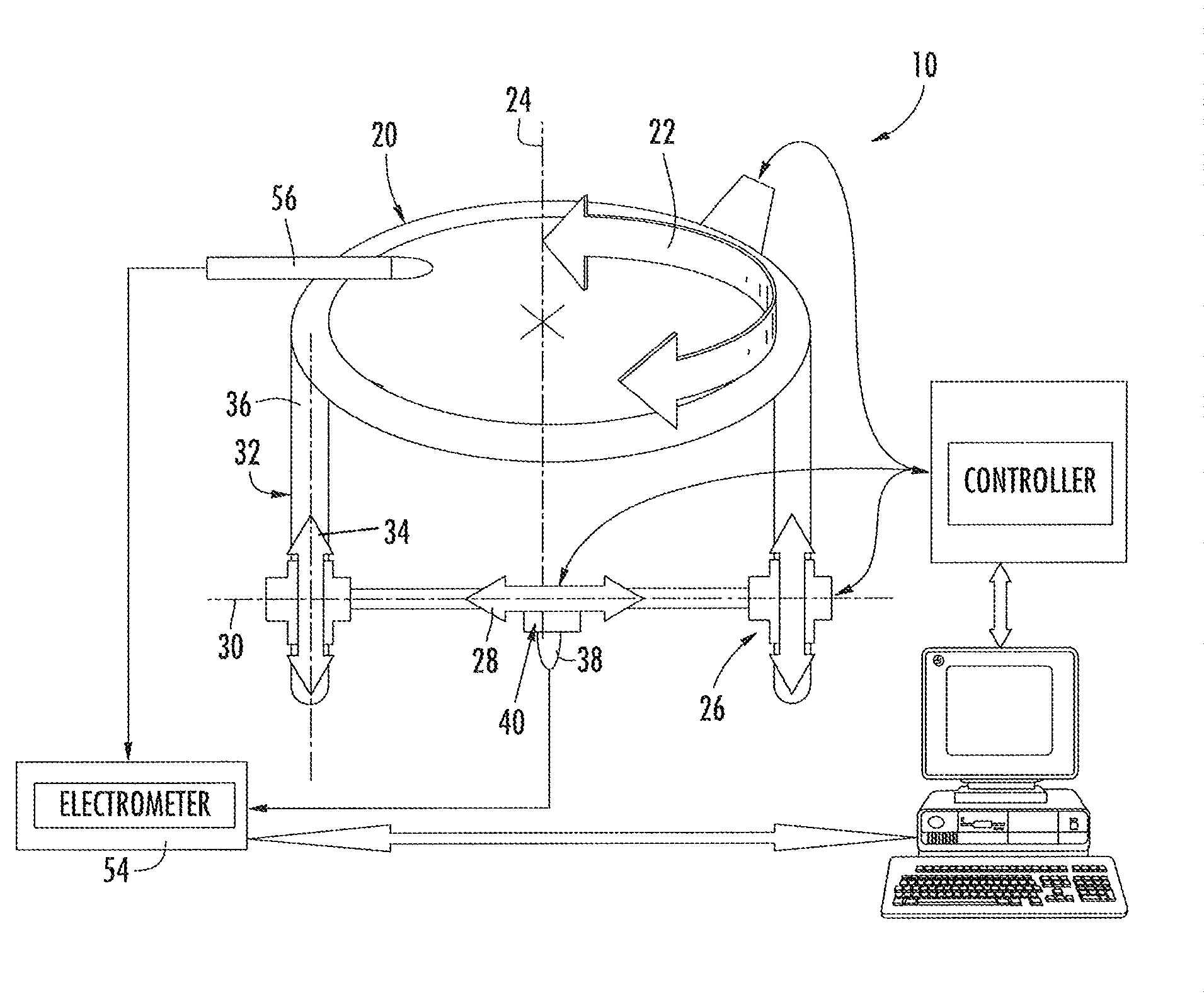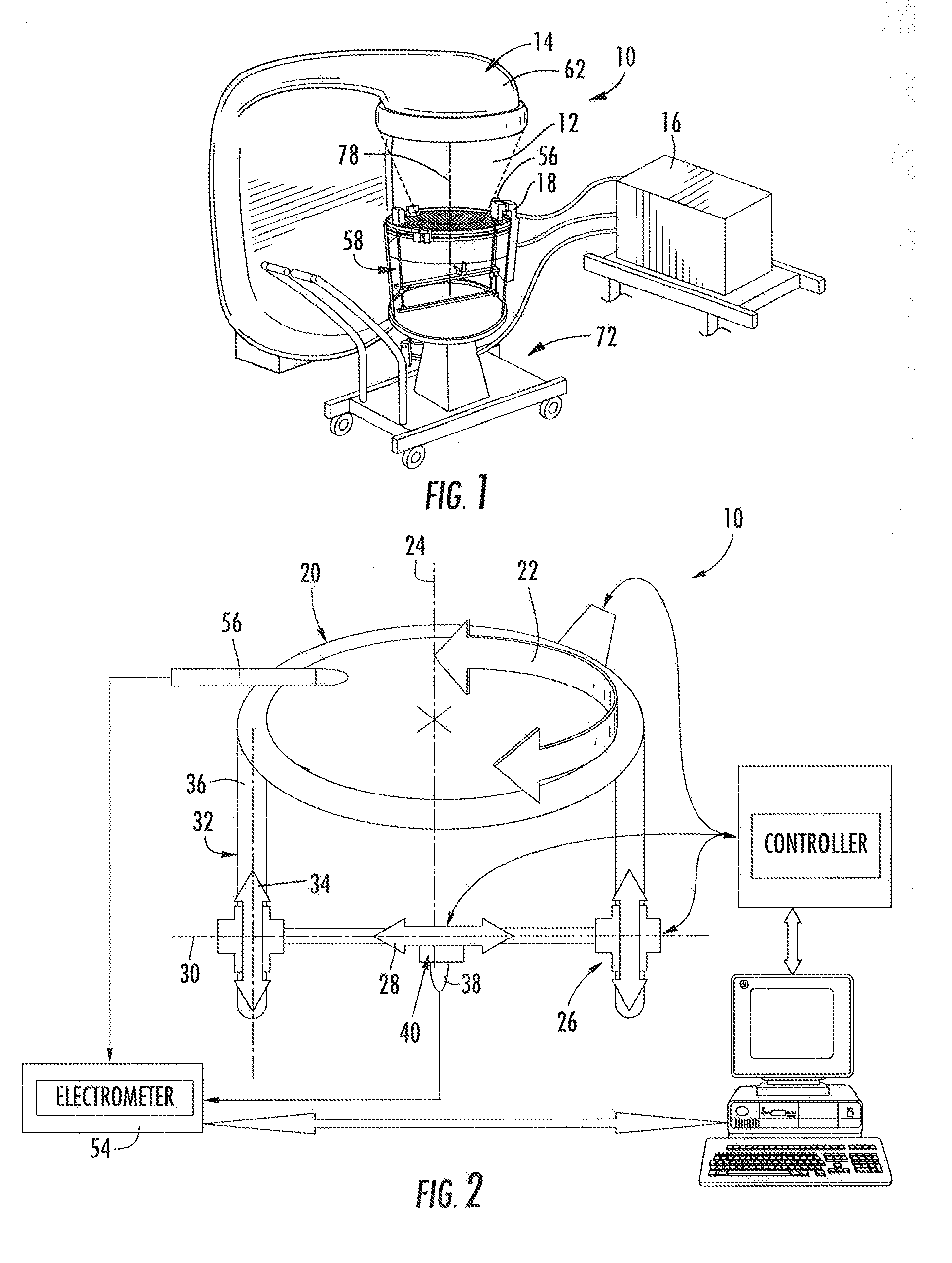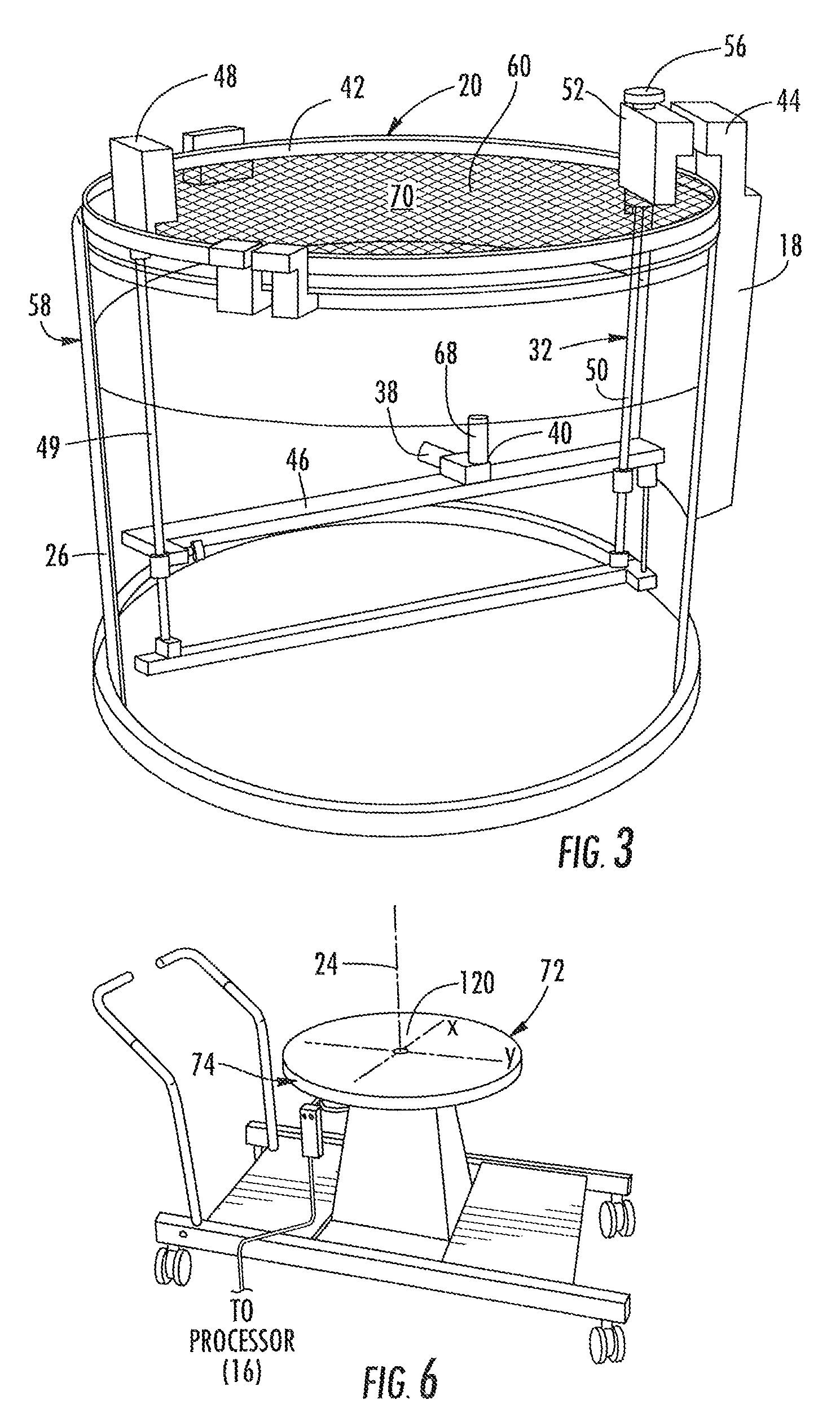Multiple axes scanning system and method for measuring radiation from a radiation source
a scanning system and radiation source technology, applied in the field of multiple axes scanning systems, can solve the problems of not being new concepts, exceeding the capabilities of most if not all commercially available scanners, and few commercial scanning systems are capable of scanning the full diagonal plus 5 cm over-scan, etc., and achieve the effect of improving the method of beam scanning confiden
- Summary
- Abstract
- Description
- Claims
- Application Information
AI Technical Summary
Benefits of technology
Problems solved by technology
Method used
Image
Examples
Embodiment Construction
[0042]The present invention will now be described more fully hereinafter with reference to the accompanying drawings, in which embodiments of the invention are shown. This invention may, however, be embodied in many different forms and should not be construed as limited to the embodiments set forth herein. Rather, the embodiments herein presented are provided so that this disclosure will be thorough and complete, and will fully convey the scope of the invention to those skilled in the art.
[0043]By way of example, and with reference initially to FIG. 1, one embodiment of the invention, herein described by way of example, is a multiple axes scanning system 10 for measuring radiation 12 emitted from a radiation source 14. The system 10 comprises a processor 16 having analysis and data storage capabilities and a controller 18 operable with the processor.
[0044]With reference to FIG. 2, a ring drive 20 is operable with the controller 18 for providing a rotational movement 22 about a first...
PUM
 Login to View More
Login to View More Abstract
Description
Claims
Application Information
 Login to View More
Login to View More - R&D
- Intellectual Property
- Life Sciences
- Materials
- Tech Scout
- Unparalleled Data Quality
- Higher Quality Content
- 60% Fewer Hallucinations
Browse by: Latest US Patents, China's latest patents, Technical Efficacy Thesaurus, Application Domain, Technology Topic, Popular Technical Reports.
© 2025 PatSnap. All rights reserved.Legal|Privacy policy|Modern Slavery Act Transparency Statement|Sitemap|About US| Contact US: help@patsnap.com



